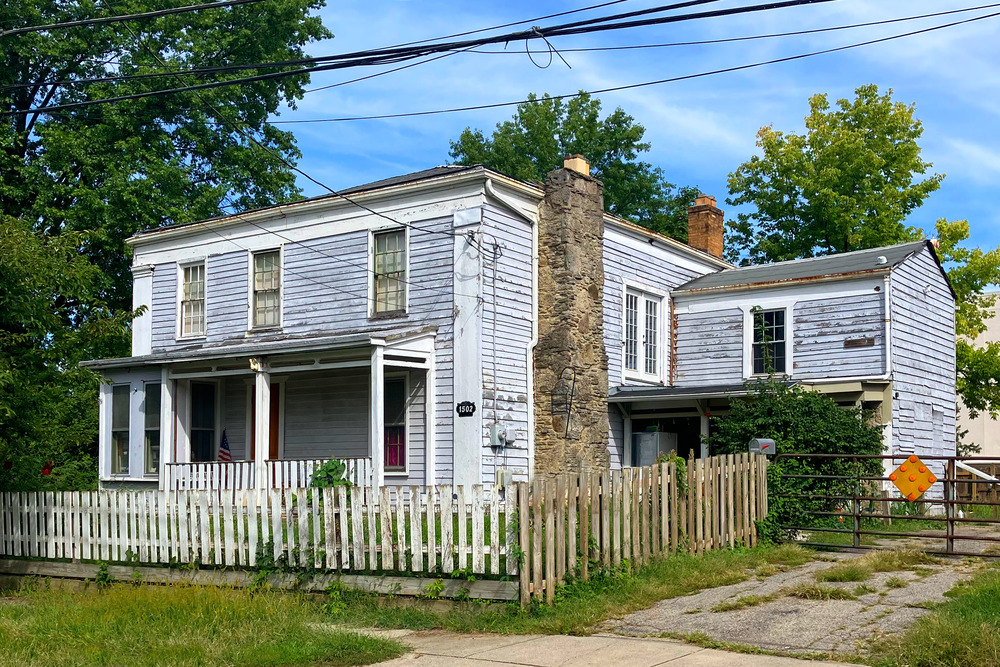Wilson Family Home
A Stop on The Underground Railroad

Samuel Wilson and his wife Sally (née Nesmith) were descended from the Pilgrims who had settled in Londonderry, New Hampshire in 1719. After 13 years of hard life in New England, the Wilsons set off in 1828 for the milder climate and more fertile soil of Ohio, settling first in Columbia, and then in Sycamore Township near Reading, where the Presbyterian family faced criticism for its abolitionist views.
The family of nine then moved to College Hill, a progressive and prosperous community on the outskirts of Cincinnati, to be close to Cary Academy, where two of their children had attended school, as well as to the Ohio Female College, where their daughter Mary Jane Pyle became a charter faculty member in 1848, teaching botany and geography.
In 1849, the Wilsons purchased land from Freeman Grant Cary, a local educator who had started Cary Academy and who was involved in the founding of Farmers' College and the Ohio Female College. They built a new house on their property, incorporating the preexisting three-room cabin.
The Wilsons were leaders in their community, known to aid freedom seekers by supplying food, clothing and shelter. The home, along with several others in College Hill, was a station on the Underground Railroad until at least 1852. Their friends included the Beechers and the Stowes as well as others in the abolition movement.
Providing aid was a family affair. For example, Sally and Samuel's son Joseph, who was a professor of ancient languages and literature, collected apparel from his students and cooperated in obtaining "singular devices and disguises" for the freedom seekers. Daughter Harriet taught at a public school in downtown Cincinnati and commuted to her family's home in College Hill on the weekends, helping to get homes ready for the freedom seekers who were en route.
In 1891, Wilbur H. Siebert, a professor of history at Ohio State University started a statewide outreach initiative to document Ohio connections to the Underground Railroad. He sent out questionnaires and traveled extensively during his vacations to interview older residents and collect information. Through this work, Siebert connected with Harriet Wilson, whose letters described her family's involvement in the Underground Railroad.
Harriet's detailed accounts provide a window into how the process of aiding freedom seekers actually unfolded. She pointed out that it was often the Quaker neighbors and women providing assistance, and that "Some of these kind hearted women did it without the hearty co-operation of their husbands." Further, "All sorts of expedients were resorted to–men were sometimes dressed as women or women as men. Some were carried in barrels, others were hidden in bags of hay or grain, etc."
According to Harriet, freedom seekers "seemed gifted with a kind of magnetic power, which, with their grips and pass words, drew those of different localities together, making them choose the least travelled ways." She was describing the landscape on either side of Hamilton Ave., leading north to College Hill, when she wrote that "the deep shadowed ravines and valleys lying on each side of our beautiful hill, soon seemed to be the popular route chosen by the wayfarers."
She described the Wilson family home as containing a dark cellar with a small opening, where freedom seekers could hide if slave catchers were believed to be in the area.
Harriet's letters to Siebert specifically named her sister Mary as someone who "could give you vivid pictures of the workings of the Underground R.R., for but a few who traveled by it to College Hill, but who were encouraged by her words of cheer and aided by her helping hand."
"...in some way never fully explained or understood, fugitives had begun coming, through whom or by whose influence was never known–having come, they were cared for and sent on their way rejoicing, others followed and thus the work continued to grow and increase until it became quite a heavy financial burden on the few who so long carried on the work."
Harriet recalled that, after the passage of the Fugitive Slave Act in 1850, the efforts of her family and of the College Hill community "had become too well known... it was deemed wiser to have it carried on by other less exposed routes so in the years immediately preceding the Civil War, there were comparatively none coming to the Hill yet those interested in the cause of human rights did their part financially to help in the work."
The Greek Revival family home still stands on Aster Pl., just east of Hamilton Ave. A simple two-story rear (now east-facing side) wing, built between 1827 and 1831, may have been part of the original farmhouse when the Wilsons purchased the property in 1849. The home remained in the family until 1926. It was listed on the National Register of Historic Places in 2000 and is still a private residence.
Images
